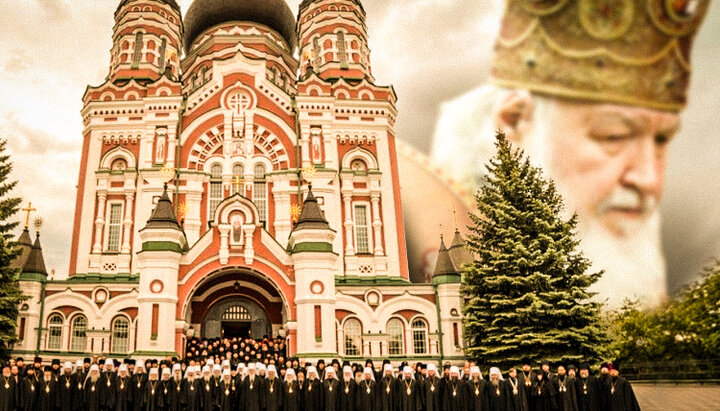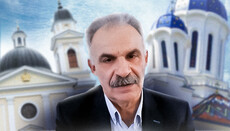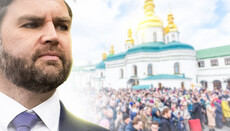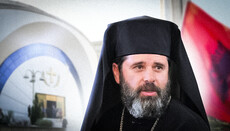Commemoration of the Patriarch: tradition or obligation?

Critics of the UOC Council in Feofaniya say the form of mentioning the Patriarch’s name in the liturgical books is obligatory, its changes speak of a schism. Is it so?
In the article “On Whether the First-Second Council Forbids not to Commemorate Patriarch”, the UOJ wrote that mentioning the name of the Patriarch of Moscow is a tradition that was absent in Russia until the 17th century.
Opponents of this position, referring to Canon 15 of the First-Second Council, point out that this is not a tradition but a canonical prescription.
The difference between tradition and canon is obvious: a tradition can change, while a canon remains unchanged for centuries. In this perspective, it is worth taking a closer look at the model of commemoration of the patriarch in the Russian Orthodox Church. After all, if it changed depending on historical circumstances, then even today its change does not speak of a schism but only reflects the conditions under which the Church lives.
If this form reflects the canonical order and is obligatory, its invariance must be fixed in the practice of the Church. To clarify this issue, we turn to the article by priest Mikhail Zheltov.
How the form of commemoration has changed throughout history
- In Byzantium, the priests commemorated the ruling bishop, the bishop – the metropolitan, and the metropolitan – the patriarch.
- The names of the three hierarchs were commemorated only in the period of the Florence Union when priests commemorated the pope, the patriarch and the ruling bishop.
- The earliest Russian liturgical books reflect the Byzantine form of commemoration.
- In the Metropolis of Moscow, the serving bishop commemorated the metropolitan, the priest – the bishop, and the deacon – the "diptych".
- In the Metropolis of Kiev (South-West) the bishop first commemorated the Ecumenical Patriarch.
- In the sixteenth century in the Kiev Metropolis, the Patriarch was commemorated at the Great Entrance. The reason for this was the liturgical practice of the Greek Churches in the era of Turkocracy. The Moscow tradition retained the Byzantine practice at this time.
- The Patriarch of Moscow began to be commemorated after 1589, and for almost 50 years the public commemoration of the ruling bishop was discontinued. Only the patriarch was commemorated.
- At that time in the Metropolis of Kiev, the priest commemorated the bishop, in the churches of the Metropolis - the metropolitan, and in the stauropegia – the Ecumenical Patriarch.
- Starting from 1655, because of the unification of commemoration forms from the Ukrainian and Russian editions, at the litanies the patriarch and the ruling bishop were commemorated.
- In the 1667 edition of the liturgical book, it was prescribed to commemorate all four Eastern patriarchs by name in order to convince the clergy and the faithful that the trial of Patriarch Nikon was legitimate and that the reform initiated by him would continue without him.
- From 1674 the commemoration of the four patriarchs was abolished because they were too frequently changed by the Ottoman authorities.
- In the 1710s, in the service books, the commemoration of the Moscow Patriarch at the liturgy could be replaced by the commemoration of the Eastern patriarchs because Locum Tenens Stefan (Yavorsky) was under investigation.
- From 1721 to 1917, the Holy Synod was commemorated instead of the patriarch, and the form of the commemoration included the ruling bishop and the royal family.
- In 1917, all churches in the Russian (then) Orthodox Church were ordered to commemorate the name of the patriarch.
Where is papism and where is the statute?
For a long time in Moscow and Kiev (where the Ecumenical Patriarch was commemorated), the commemoration of the name of the Patriarch of Moscow was different during the liturgy. Uniformity was not introduced until the seventeenth century. It is this uniformity that became one of the main arguments in the process of the Phanar's granting the Tomos to the OCU.
The Constantinople Patriarchate claims that the Metropolis of Kiev was not given into the jurisdiction of the Russian Church and the canonical boundaries of the Patriarchate remain unchanged. According to the Phanariots, the synodal documents only provide for a temporary transfer by indulgence (κατ' ο ἰκονομία) to administration ("vicarage" - ἐπιτροπικῶς), and in fact give only permission for the Metropolitan of Kiev (and only him, not other bishops) to be ordained in Moscow.
The condition that the Metropolitan of Kiev commemorates the Patriarch of Constantinople "first" at the liturgy, and then only the Patriarch of Moscow, is a "visible symbol" of keeping the canonical authority of the Constantinople Patriarch over the Kiev See; and since this condition was not observed in Kiev for many centuries, the agreement with the Moscow Patriarchate to transfer the Kiev Metropolis could also be revoked.
It was not until 1917 that the Russian Orthodox Church mandated that the name of the patriarch be commemorated in all churches.
At that time, some Russian theologians argued that the commemoration of the Patriarch of Constantinople was defined as a remembrance of his historical "privileges" and that "prescribing to commemorate the name of the Patriarch of Constantinople at the Liturgy along with that of the Moscow Patriarch means his actual canonical authority over Kiev – fundamentally wrong.”
The Holy Synod of the ROC stressed that "the act of 1686 confirming the Metropolis of Kiev as part of the Moscow Patriarchate and signed by His Holiness Patriarch Dionysius IV of Constantinople and the Holy Synod of the Church of Constantinople is not subject to revision", and the decision to withdraw it is "canonically void”. In other words, the claims of the Phanar regarding mandatory commemoration of the Patriarch of Constantinople, as stated in the Act on the transfer of the Kiev Metropolis, are "canonically null and void"!
Some experts connected Patriarch Bartholomew's desire to make a "rollback" to 1689 in the question of the Kiev Metropolis over the violation of the conditions of commemoration with the papal claims of the Phanar.
What is the result? If the Phanar demands compliance with the terms of the Tomos on the transfer of the Kiev Metropolis, which include a clause of obligatory commemoration of the patriarch, it is "canonically null and void" and "papist". And if the ROC demands that the UOC observe the clauses of the statute on mentioning the name of the Patriarch during the liturgy, this is a "statutory requirement", the violation of which is unacceptable and indicates a schism.
* * *
Over the course of several centuries, the formula for commemorating the name of the Patriarch in the Russian Orthodox Church has undergone considerable changes. It has often depended on historical conditions, the prescriptions of the authorities, the possibility of obtaining current information, i. e. the absence of normal communication, the desire to unify practice in relation to the Byzantine tradition, etc. Therefore, it can be argued that the current model of commemoration of the name of the Primate used by the Ukrainian Orthodox Church reflects the historical conditions in which it exists and cannot serve as a marker of schism.









